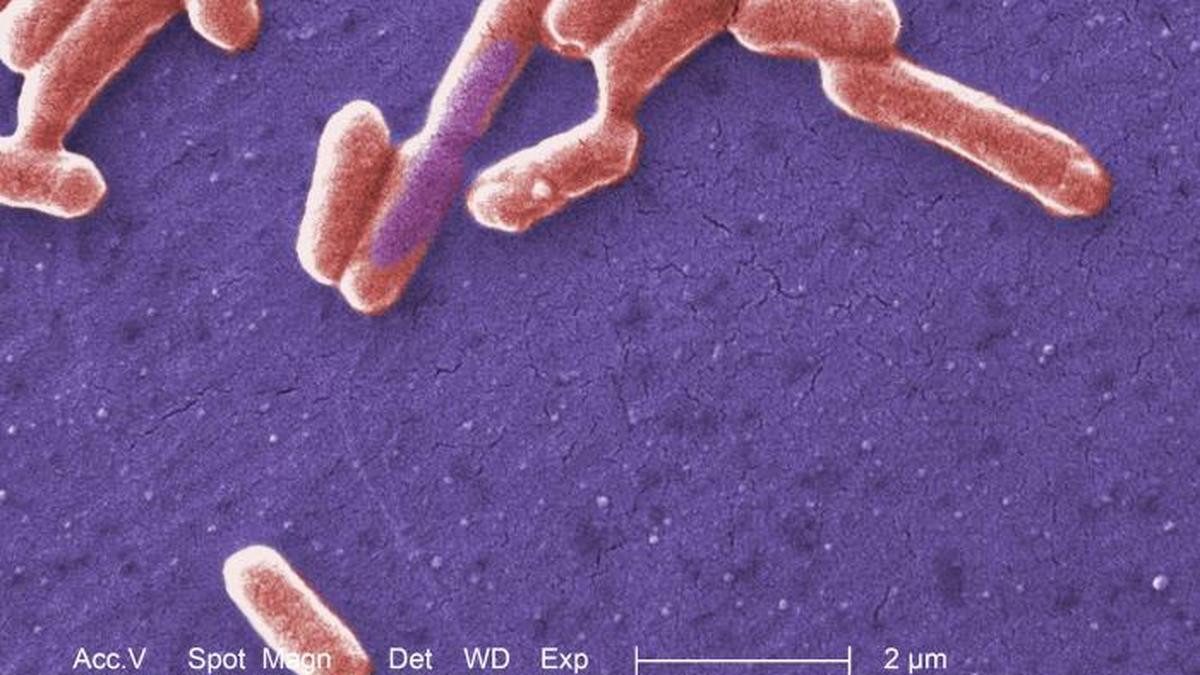A scanning electron micrograph of Escherichia coli bacteria.
| Photo Credit: US CDC
In a step towards building cheap and programmable bioelectronic devices, Imperial College London and Zhejiang University researchers have shown in a new study that genetically engineered bacteria can be turned into self-powered chemical sensors that interface directly with electronics.
According to the authors, these new platforms are possible today thanks to advances in synthetic biology and bioelectrochemistry.
Traditional biosensors, such as those based on enzymes, are often fragile, costly and/or have a slow response time in complex environments. Whole-cell biosensors, which use living microorganisms, can maintain and repair themselves and operate inside contaminated samples. However, in most conventional designs, these biosensors’ output signals are in the optical range, which is harder to integrate into portable or field-deployable electronics.
In their study, the researchers built a modular biosensor that could sense the presence of specific compounds and convert that into an electrical signal, which is compatible with low-cost electronics.
The team used genetically engineered Escherichia coli bacteria as ‘containers’. The microbes hosted three biosensor modules. The sensing module detected a target chemical through specific molecular regulators. The information processing module amplified or processed the signal. And the output module produced phenazines, nitrogen-containing organic molecules that can be measured using an electrochemical technique called voltammetry.
This way, the researchers built two biosensors. The first one could detect arabinose, a simple plant sugar often used in lab media. When a sample containing the sugar came in contact with the bacteria, the cells started producing phenazine-1-carboxylic acid. When this molecule touched the electrode, the latter produced a current that rose with sugar level. The signal appeared in roughly two hours.
The second sensor detected mercury ions in water. Because these ions are present only in trace quantities in real-world water, the researchers added a genetic amplifier to the E. coli. When the mercury bound with a protein called MerR, the meeting triggered the production of a polymerase that pushed the phenazine production pathway into overdrive. As a result, just 25 nanomoles of mercury — below the WHO safety limit — produced a readable current within three hours.
The team also demonstrated an ‘AND’ logic gate inside E. coli, so that it produced a signal only when two specific molecules were present together.
The team thus established a proof of concept of a living, electronically integrated biosensor capable of detecting compounds in its surroundings, processing the signals, and supplying data.
Published – August 17, 2025 05:45 am IST
